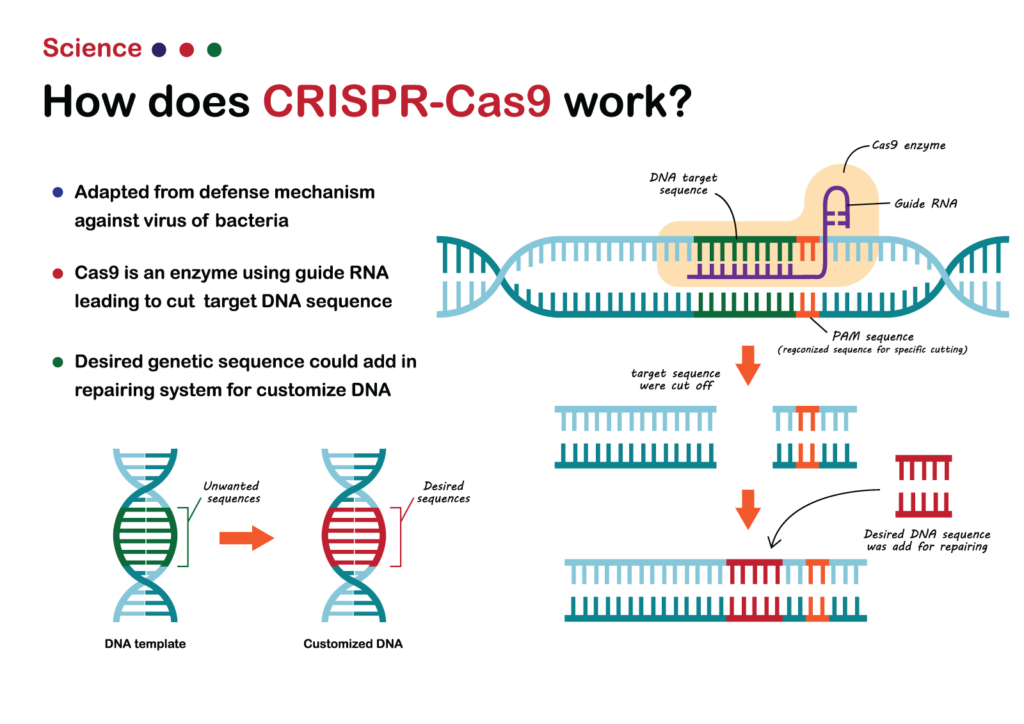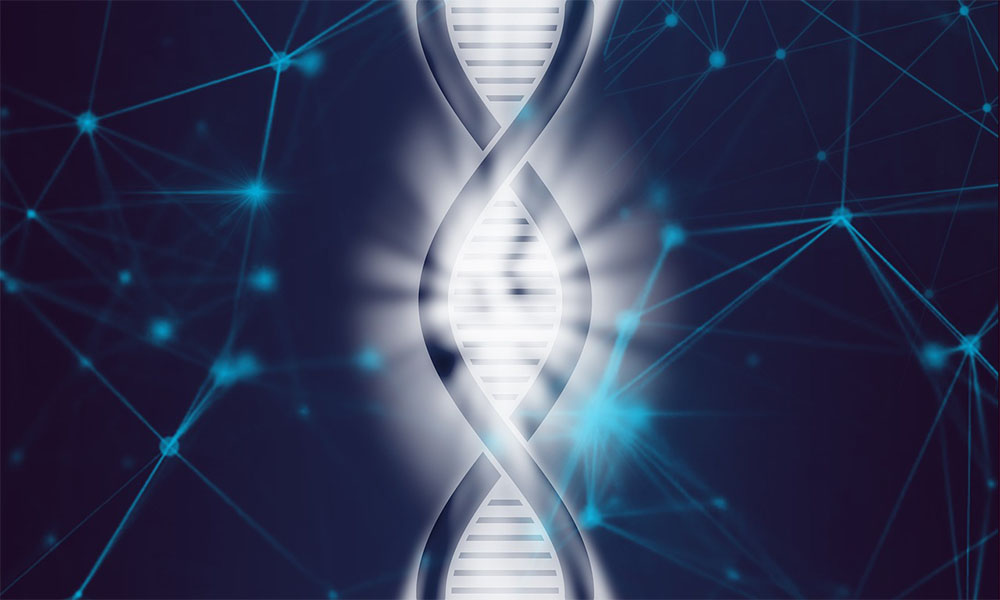CRISPR or Cas9 is short for clustered regularly interspaced short palindrome repeats. This is a unique technology that allows geneticists and medical scientists to edit genome components by removing, adding, or modifying DNA sections. In the scientific community, the CRISPR-Cas9 system has generated optimism due to its simplicity of use, and is generally more precise and effective than other current methods of genome editing.

The CRISPR-Cas9 system contains two major molecules that incorporate a modification into the DNA. An enzyme acts as a pair of molecular scissors that cut two strands of DNA on a specific area so that removal or addition of DNA can be performed. The second is a slice of RNA or protein, called as RNA guide (gRNA). This consists of a small piece (about 20 bases long) of pre-designed RNA sequence placed inside a longer RNA scaffold.

The scaffold section binds to the right part of the genome with DNA and the pre-designed sequence ‘guides’ known as Cas9. This makes sure that the proper point in the genome is cut. The RNA guide is designed to locate a particular sequence in the DNA and bind to it. There are RNA bases in the guide RNA that supplement those of the target DNA sequence in the genome. This means that the guide RNA can only bind to the target sequence and no other genome regions.
In the DNA sequence, the Cas9 follows the guide RNA to the same position and makes a cut through both strands of the DNA. The cell understands at this point that the DNA is damaged and attempts to restore it.

References
Charpentier, Emmanuelle. “CRISPR‐Cas9: How Research on a Bacterial RNA‐Guided Mechanism Opened New Perspectives in Biotechnology and Biomedicine.” EMBO Molecular Medicine, John Wiley & Sons, Ltd, 21 Mar. 2015, embomolmed.embopress.org/content/7/4/363.
Gupta, Rajat M., and Kiran Musunuru. “Expanding the Genetic Editing Tool Kit: ZFNs, TALENs, and CRISPR-Cas9.” The Journal of Clinical Investigation, American Society for Clinical Investigation, 1 Oct. 2014, www.jci.org/articles/view/72992.
Harrison1, Melissa M., et al. “A CRISPR View of Development.” Genes & Development, Cold Spring Harbor Lab, 1 Jan. 1970, genesdev.cshlp.org/content/28/17/1859.full.
Hsu, Patrick D, et al. “Development and Applications of CRISPR-Cas9 for Genome Engineering.” Cell, U.S. National Library of Medicine, 5 June 2014, www.ncbi.nlm.nih.gov/pmc/articles/PMC4343198/.
Thakore PI, Gersbach CA. Genome Engineering for Therapeutic Applications. In: Laurence J, Franklin M, editors. Translating Gene Therapy to the Clinic: Techniques and Approaches. Academic Press, Elsevier, 2015; pp. 27-44.
